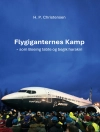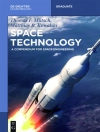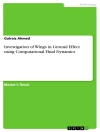Doctoral Thesis / Dissertation from the year 2018 in the subject Engineering – Aerospace Technology, grade: Excellent, Suez Canal University (Faculty of engineering), language: English, abstract: Nowadays, many researchers pay much attention to Multilateration localization process in air traffic control. This thesis deals with system geometry effect on target localization process. Modifications are proposed in both the sensors deployment network and the algorithm sequence used.
The work will be on a 3 steps: First, working on a small cell network taking minimum number of sensors. Different optimal sensor deployment methods will be examined and a pilot area will be chosen from a Multilateration network at Cairo International Airport, 05L Runway (RW). Simulation for a single aircraft is performed and the results are compared. Second, the deployment method that gives the best results in a small cell network will be considered and a new sensors deployment covering an area larger than the existing one is proposed, trying to have the same performance of the existing system with the advantage of decreasing the number of sensors. Finally, the proposed Multilateration network is divided into 9 main clusters and 4 backup clusters instead of using all sensors in localization process, and the cluster that has the least PDOP (position dilution of precision) is selected. To enhance the localization process only the cluster that has least PDOP < 21 is selected. Otherwise, are rejected. Space capacity and safety of Airspace Surveillance Systems are regularly increasing to meet the demands of air traffic control.
A 2-D Multilateration algorithm is proposed to accurately identify the aircraft position. It is based on the classical Two Ray propagation model. Important parameters that affect the final aircraft estimation position are presented like the path gain factor (interference factor). The proposed algorithm uses the geographic coordinates (Latitude and Longitude) which are considered more practically used in navigation than Cartesian coordinates that are used in previous algorithms in literature. In order to simulate the algorithm, the Multilateration network at Cairo international Airport is considered to be a pilot area and the results are presented.
लेखक के बारे में
Mohamed El-Ghoboushi received his B.E. in Electronics and Electrical communications Engineering
from Cairo University, Giza, Egypt, in 2007, and a M.S. degree in Electronics and Electrical communications Engineering from Cairo University, Giza, Egypt, in 2014, He received the Ph.D. degree in electrical communications engineering from Suez Canal University, Ismailia, Egypt, in 2018












